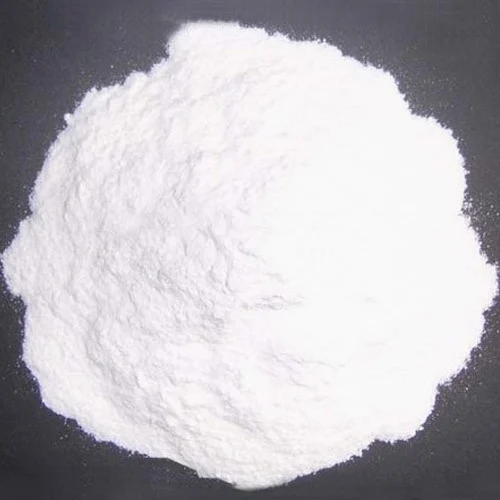
Acidum boricum
Latin name: Acidum boricum
Short name: Bor-ac
Common name: Boric Acid | Hydrogen Borate | Orthoboric Acid
Primary miasm: Psoric
Kingdom: Minerals
Family: Inorganic Acid of Boron.
- Symptomatology
- Remedy Information
- Differentiation & Application
Boric acid (H₃BO₃) is a weak monobasic Lewis acid of boron, occurring naturally as the mineral sassolite, particularly in volcanic regions such as Tuscany, and in hot springs. It forms colourless crystals or a white powder, soluble in water. In crude form it has antiseptic, antifungal, and mild insecticidal properties. In homeopathy, the remedy is prepared by trituration of the pure crystalline acid [Clarke].
Used extensively in medicine as an antiseptic for wounds, eye washes, and ear preparations; in industry for glass and ceramics; as a flame retardant; and in pest control against cockroaches and ants.
The main proving data come from Dr. W. Boericke and clinical observations, with toxicological records contributing additional symptomatology.
- Mucous Membranes: Especially of eye, ear, throat, urinary tract.
- Skin: Particularly abrasions, burns, ulcerations.
- Gastrointestinal Tract: Irritation, nausea, vomiting from toxic exposure.
- Nervous System: Weakness, tremors in prolonged poisoning.
- Kidneys and Urinary Bladder: Irritation, frequency, and burning.
- Rest in a cool, quiet environment.
- Application of soothing moisture to irritated parts.
- Removal of cause (e.g., stopping chemical exposure).
- Warmth aggravates skin irritation.
- Continued exposure to boric acid in crude form.
- Motion in cases of vertigo or weakness.
- Arsenicum album – More intense burning pains, profound restlessness, collapse.
- Apis mellifica – Stinging, oedematous swelling; boric acid more for superficial rawness and oozing.
- Calendula – Prominent in wounds and lacerations; boric acid for clean, antiseptic healing of inflamed mucosa and skin.
- Complementary: Calendula, Apis in skin healing; Mercurius in mucosal ulceration.
- Antidotes: Crude form antidoted by milk, egg white (protein binding).
- Follows well: After acute inflammation treated by Aconite or Belladonna, to complete healing phase.
The essence of Boricum acidum is its mild yet persistent antiseptic influence, with an affinity for mucous membranes and skin, coupled with a tendency to cause or cure irritation, superficial inflammation, and slow-healing ulcerations. The patient’s general state is one of low vitality, languor, and mild febrile reaction to irritative processes.
- Indicated in chronic or subacute conjunctivitis where discharge is bland but healing is sluggish.
- Useful in ear canal eczema with watery exudation.
- Internally, may be indicated in chronic urinary irritation after acute cystitis.
- Low potencies (3x–6x) often used in mucosal and skin cases.
Mind:
- Indifference to surroundings.
- Mental dullness during illness.
Head:
- Heaviness of head with fever.
- Vertigo on rising.
Eyes:
- Conjunctiva, inflammation of.
- Burning, smarting eyes.
- Photophobia with redness.
Stomach:
- Nausea, persistent.
- Vomiting, greenish.
Skin:
- Eruption, erythematous.
- Ulcers, slow-healing.
- Burns, superficial.
- Eczema with serous discharge.
Extremities:
- Weakness of limbs.
- Trembling during fever.
Generalities:
- Irritation of mucous membranes.
- Weakness, exhaustion.
- Aggravation from warmth.
- Clarke J.H. – A Dictionary of Practical Materia Medica: Source preparation, clinical uses, toxicology.
- Boericke W. – Pocket Manual: Affinity for mucous membranes, skin.
- Allen T.F. – Encyclopedia of Pure Materia Medica: Recorded proving symptoms.
- Hering C. – Guiding Symptoms: Gastrointestinal and urinary effects.
- Hughes R. – Manual of Pharmacodynamics: Toxicological notes, physiological action.
- Kent J.T. – Lectures on Materia Medica: Generalities, mucosal affinity.
- Farrington E.A. – Clinical Materia Medica: Use in chronic mucous membrane inflammation.
- Lippe A. von – Keynotes: Irritation and slow healing tendencies.
- Nash E.B. – Leaders in Therapeutics: Clinical examples in skin healing.
- Dewey W.A. – Practical Homœopathic Therapeutics: Grouping under antiseptic remedies.
